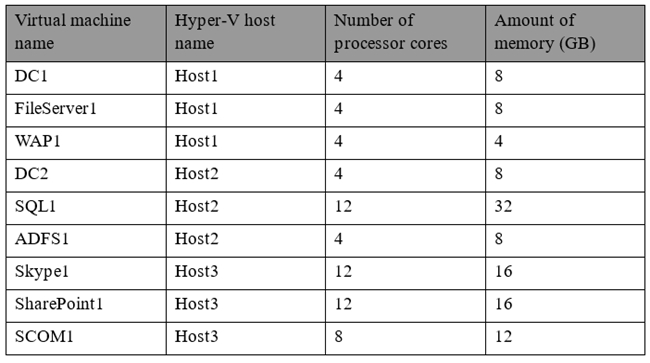

You have three Hyper-V hosts that each have 20 processor cores and 64 GB of RAM. Nine virtual machines are deployed to the hosts as shown in the following table.
Host1 is located in New York, Host2 is located in Los Angeles, and Host3 is located in Denver. None of the virtual machines use dynamic memory.
You plan to deploy a two-node Exchange Server 2016 database availability group (DAG) by using the virtual machines. Each node will have 12 processor cores and 24 GB of memory.
You are evaluating whether you can use the existing servers for the deployment or whether you must purchase additional servers.
You need to recommend where to place the Exchange servers. The solution must minimize costs.
What is the best recommendation to achieve the goal? More than one answer choice may achieve the goal. Select the BEST answer.
l1f3rl
Highly Voted 5 years, 4 months agoRakRocky
Most Recent 4 years, 7 months agoAmbi_07
4 years, 9 months agoalgerianphoenix
4 years, 8 months ago